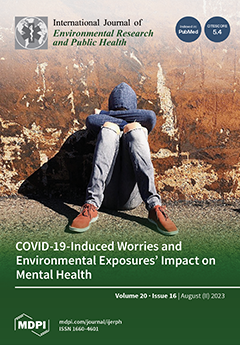The association between neighborhood-built environment and body mass index (BMI) is well-characterized, whereas fewer studies have explored the mechanisms underlying the relationship between neighborhood social environment and obesogenic behaviors. Using data from a random sample of 16,820 residents ≥18 years from all 169
[...] Read more.
The association between neighborhood-built environment and body mass index (BMI) is well-characterized, whereas fewer studies have explored the mechanisms underlying the relationship between neighborhood social environment and obesogenic behaviors. Using data from a random sample of 16,820 residents ≥18 years from all 169 Connecticut towns and seven ZIP Codes in New York, this study examines the influence of neighborhood social environment on residents’ mental wellbeing, physical activity, and BMI. Structural equation modeling was conducted to estimate direct and indirect effects of neighborhood social environment on BMI, using mental wellbeing and physical activity as intermediate variables. There were significant total [β(SE) = 0.741 (0.170),
p < 0.0001], direct [β(SE) = 0.456 (0.1890),
p = 0.016], and indirect [β(SE) = 0.285 (0.061),
p < 0.0001] effects of neighborhood social environment on BMI. Low physical activity was a partial mediator of the effect of non-favorable neighborhood social environment on BMI [β(SE) = −0.071 (0.011),
p < 0.0001]. The association between neighborhood social environment and BMI was also mediated by mental wellbeing [β(SE) = 0.214 (0.060),
p < 0.0001], and by mental wellbeing through physical activity [β(SE) = 0.071 (0.011),
p < 0.0001]. Study findings provide further support for building strong social environments to improve population health and suggest that strategies prioritizing mental wellbeing may benefit behavioral interventions aimed at reducing obesity risk and should be a focus of prevention efforts in and of itself.
Full article
 to open them.
to open them.




